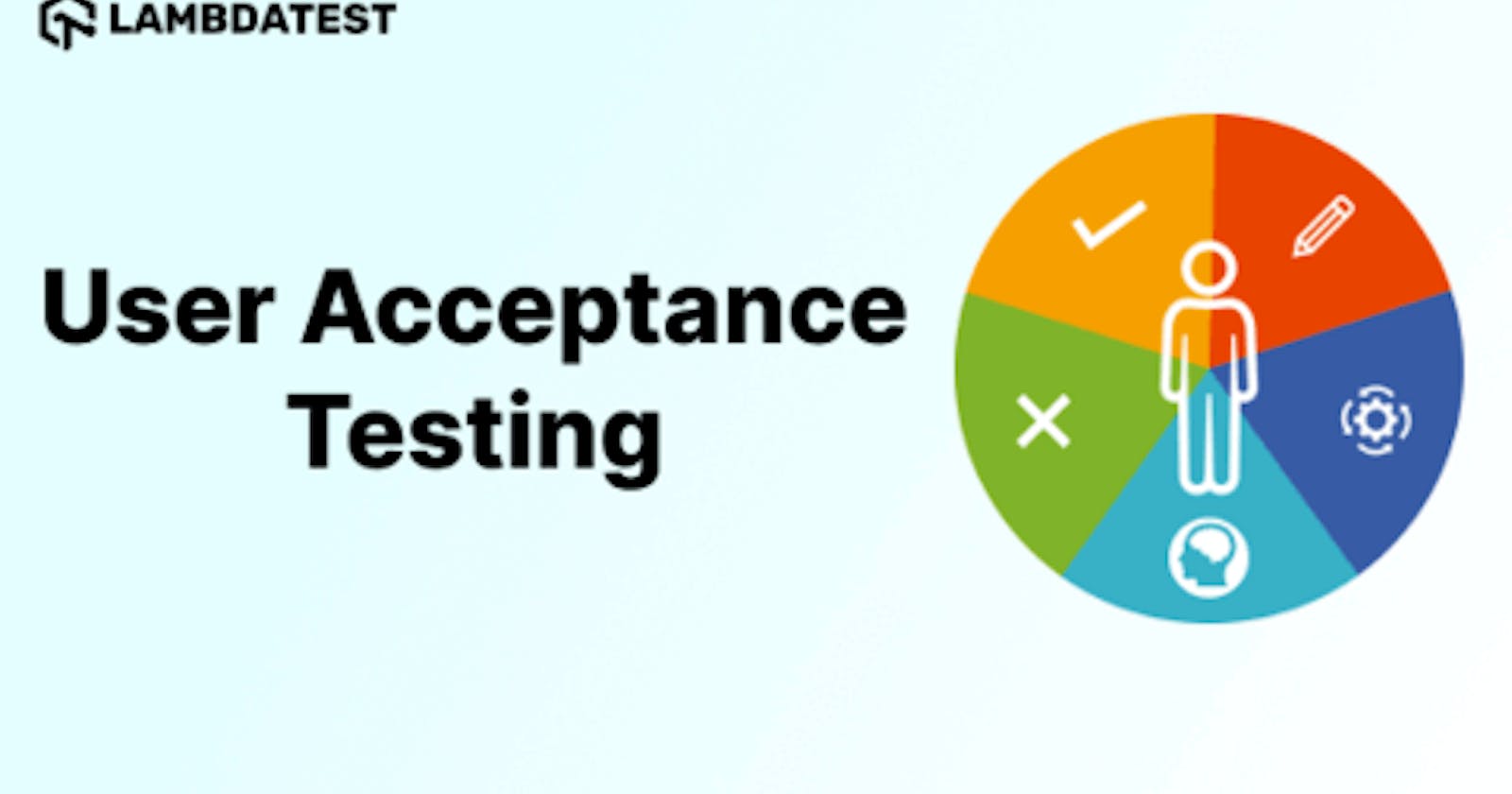OVERVIEW
User Acceptance Testing (UAT) is the final validation in software development, where end-users ensure the application meets needs and works correctly in real scenarios. UAT aims to ensure that the software application meets the end-user or customer’s expectations and is fit for its intended purpose.
Everybody is aware of the concept of testing, whereas approval refers to agreeing to certain criteria. The user can be a software product consumer or someone who has asked you to build the product for them. The primary purpose of user acceptance testing is to validate it against any business needs and requirements. The end-user with business familiarity would carry out the validation.
What is User Acceptance Testing?
User acceptance testing is also known as end-user testing, where the client or user would perform website testing or mobile app testing. User Acceptance Testing (UAT) is the final phase in software development, where end-users test to ensure the application meets real-world business requirements and performance expectations.
The development and core testing team usually wouldn’t be directly involved in the testing process. It’s to test how welcoming the users are towards the product. This is the final stage of testing you perform after completing the system, functional, and regression testing.
Since user acceptance testing is the last stage of testing that you carry out before making the software live, this is when a customer can perform software testing while measuring how it fits the purpose. This would be a litmus test for the entire software testing life cycle (STLC) of the product.
Generate unique random GUIDs with our random guid generator tool to enhance your data management.
The purpose behind User Acceptance Testing
Usually, user acceptance testing is the last step before making the product live or accepting the product’s delivery. We perform it after testing the product thoroughly through system testing.
Developers and testers are none other than tech folks validating the software against different functional specifications. They would interpret the software requirements as per their understanding and domain expertise.
Even though the software is wholesome as per the functional specifications, we must also remember a few business processes and requirements. Only the end-users would be able to interpret them.
Many businesses have suffered huge losses owing to post-release-related issues. It’s harder and cost-nagging to fix the defects after product release than to fix them before. User Acceptance Testing supported by cloud testing can help you sort it out.
Who needs User Acceptance Testing?
Usually, it’s the client or the user performing User Acceptance Testing. The person could be someone who buys the product or someone with custom-built software through the end-user or the service provider. The team can consist of beta testers, or the customer would be requested to choose UAT members on an internal basis from every organizational group to test every user role correctly.
Types of User Acceptance Testing
More than understanding how different user acceptance testing and functional testing are, we need to possess a clear idea of the different types of UAT. These are the user acceptance testing types:
- Alpha testing
The QA team would run alpha tests without prospective users. It would take place in the development environment, which is under the project team’s control. If there is any system defect by the testing team during alpha testing, the development team’s job is to fix those bugs before moving the product to the next level of UAT.
- Beta testing
Beta testing is also known as field testing, and it’s pretty different when you compare it with alpha testing. This type of UAT would support the customer environment by matching the real-time system usage conditions. For successful beta tests, the project team would engage their prospective customers and let them pinpoint bugs and share product performance and usability opinions.
- Operational acceptance testing
This kind of user acceptance testing would hold cases for validating user workflows. Otherwise known as production acceptance testing, you can define operational acceptance testing as one among the UAT types to perform test verification , validate backup plans, user training algorithms, security check completion, and software maintenance.
- Prototype testing
Every QA team would run different prototypes at early development stages after designing the MVP fully, thus easily detecting defects and errors before creating the product version. This way, the development and design team can work on the solution again to improve the final functionality and interface.
Every prototype tester would gather their prospective users as a part of the focus groups to validate the interface clarity while corresponding it to user needs and requirements. They use the behavioral data and verbal feedback to get the right idea on which direction the marketing and branding team should choose to upscale the positional and visual aspects.
- Contract and regulation acceptance testing
This would imply product validation against the specific requirements in your contract. The job of the testing team would be to review and provide feedback on the acceptance criteria you define in your service level agreement. The experts should ensure that the software complies with data protection, government security, compliances, and regulations.
- Factory acceptance testing
We use this kind of UAT within the testing team before beta testing. This goes a long way along the development cycle for validating the software and hardware system components. FAT lets you decide why system defects have occurred. It’s pretty cheaper when you compare it with tests requiring end users.
Need random numbers for statistical analysis? Try our random number generator now!
Do you really need UAT?
Yes, we do. After you perform integration, regression, and system testing, you might wonder why you need this testing. This is one of the most needed project phases during which the users would validate if the system would fit their needs.
UAT would depend more upon how the end-user would perceive it, the domain strength, and knowledge of the needed department.
This will help your business teams since they can easily provide their opinions and views, letting you use the system in a real-world atmosphere.
Benefits of User Acceptance Testing
As we’ve seen in the previous section, user acceptance testing is a crucial part of Quality Assurance, but what exactly does it entail?
The concept of user acceptance testing came about to improve upon and replace the end-to-end testing method. The major problem with the end-to-end testing method was that the users weren’t testing the application — they were just observing how the product worked on their screen in a controlled environment. Not only did this not provide true usability feedback, but it wasn’t a realistic way to test.
The benefits of user acceptance testing include:
Better end-user experience and higher satisfaction with the final product.
More efficient customer workflows.
Reduced support costs and fewer customer service tickets.
Fewer defects found in production, leading to less downtime, better reliability, and higher productivity.
Spice up your project timelines with our random time generator. Generate timestamps effortlessly!
Who is responsible for UAT?
Testing or User Acceptance Testing is a critical step in the Software Development Life Cycle that ensures software is ready for release. Traditionally, the QA team was responsible for UAT. However, many companies have moved away from this model and now involve others in UAT.
This could mean anyone from an individual contributor to a CEO. It could also include people who have not been directly involved in project planning and development, as long as they communicate with those who were. For example, if you’re launching a print magazine, you’d want your writers and editors to be aware of how the finished product looks at this stage so they can give their input on what might work better or be more unclear when it comes time to print.
User Acceptance Testing is a critical part of any software development process. It is a time in which users, such as the business owners or end users of the application, test the functionality and usability of the application before it is rolled out to its target audience.
UAT can be done at multiple stages of the software creation lifecycle:
Extreme Programming methodologies suggest that UAT should be performed as often as possible
While this may be expensive and time-consuming, it does ensure that bugs are caught and fixed at an early stage in the development process
More traditional processes have UAT being performed by the end users after testing and acceptance by QA experts
UAT is a critical step in creating a successful application because it ensures that the final product will meet or exceed all expectations of its target audience. You can ensure that your UAT process goes smoothly in multiple ways.
Make sure your users are well versed in how to use your application before they begin testing it.
Stay involved with your users throughout their testing process to ensure that you catch any errors or problems that may arise during their testing phase.
The UAT process is where the rubber meets the road when it comes to meeting organizational goals and objectives.
Prerequisites of User Acceptance Testing
The best way to understand the user acceptance testing process is to start understanding the pre-requisites. These are the following requirements:
The first step is to understand the key acceptance criteria.
To put it in simple words, we use acceptance criteria to evaluate the product before finally accepting it. It can either be business or app functionality oriented. You need to set up a meeting with the user or the client to get a clear idea of how much you need to test along with the aspects. You also need to draw up the initial contract before beginning the review and agreement of the SDLC.
The second step is to define the QA scope.
The scope of a QA is to assist in the testing process. In a few cases, the tester is responsible for recording and responding to the log bugs and results while performing actual tests.
After completing this, you can also present the result to the users/clients. This decision would be on whether all these results would remain sufficient along with the expectations for accepting AUT.
Usually, UAT is the move made by a business user or a Subject Matter Expert (SME).
Simplify your testing process with our test data generator. Get realistic data instantly!
User Acceptance Testing Tools
User acceptance testing is a crucial part of a software or web development and design. It refers to the final testing stage before a project goes live, where the client gets to test the product before it’s ready for public use. Several tools can be used for UAT. Which one you use depends on your setup, the scale of your project, what you’re looking for, and how much money you have to spend.
Some top user acceptance testing tools include:
Fitness Tool: Fitness Tool is a Java test engine that helps you create tests and record their results in a table. It is remarkably easy to use, even for those who are not developers.
Waitr: Watir is the most widely used toolkit to automate tests of web applications. It is a ruby testing library for browser-based tests during an acceptance process of Software as a Service.
How to perform User Acceptance Testing?
You can perform User Acceptance Testing in a few simple steps. We perform this software testing type at the location of the client. Once you satisfy the entry criteria, you must complete the following tasks:
Business requirement analysis
The user acceptance testing would require developing and identifying testing scenarios. You can derive the test scenarios from business use cases, project charters, business requirements documents, process flow diagrams, and system requirements specifications (SRS).
UAT test plan creation
The UAT test plan is available to outline the needed strategy for verifying and ensuring that an application meets the needed business requirements. This would document every entry and exit criteria, test cases approach, test scenario, and test timeline.
Test scenario identification
You need to identify the test scenarios regarding high-end business processes while creating test cases with the proper test steps. Your test case should be enough to cover most user acceptance testing scenarios. We consider business use cases as an input to create all the test cases, which would lead you to create an effective test design.
Creation of UAT test cases
You should always be able to leverage live data meant for user acceptance testing. You need to scramble the data for both privacy and security purposes. Every tester should familiarize themselves with the flow of the database.
Test data preparation
Execute different test cases to report any existing bugs. You need to re-test those bugs after you fix them. You can use test management tools to execute it.
Running the test cases
User acceptance testing team or business analysts should send a sign-off mail after you perform user acceptance testing. Once you sign off, you can send the product for production. User acceptance testing deliverables include user acceptance testing scenarios, test plans, test cases, defect logs, and test results.
Results recording
Before you move from the test environment into the production phase, you need to record the results. You need to check for any open critical defects, check on how satisfactory the business process functions, and record the discussion on what the stakeholders have to say.
Protect your data privacy with our credit card number generator. Generate secure card details on demand.
How can LambdaTest help you with User Acceptance Testing?
The agile environment, in one or the other way, is quite dynamic. While dealing with an agile world, every business user would involve themselves through every project sprint. They can also enhance the project through different feedback loops.
With LambdaTest, you can get the most out of user acceptance testing. You can efficiently perform beta testing for your app or website using a real device cloud.
Here is the simple procedure you must follow:
Step 1: Sign up and login into the LambdaTest account.
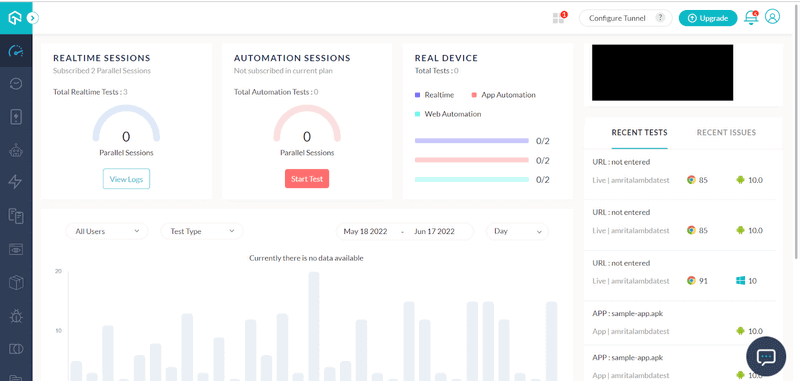
Step 2: Choose Real Device from the left panel to access Real Time and App Automation . Select Real Time.
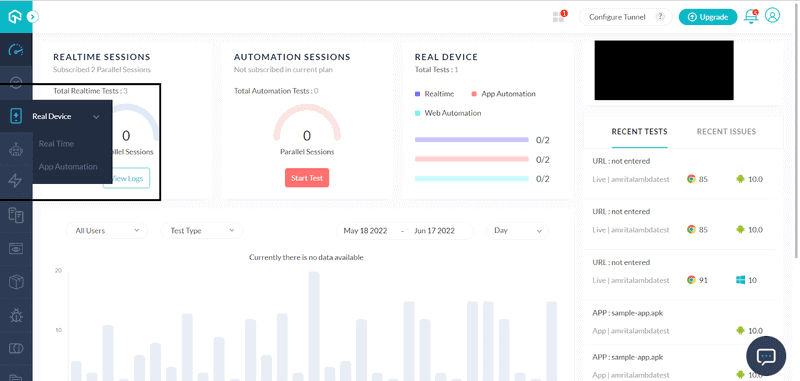
Step 3:You can find two options in Real Time — App Testing and Browser Testing.
Real Device App Testing
To perform App Testing, you must make sure that you upload your choice of app and configure the needed aspects such as Device and OS type. You can then start the test.

Step 4: Test the app once you install it.
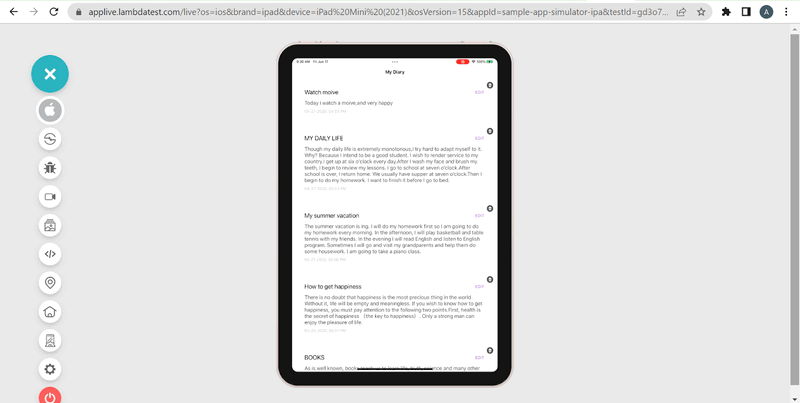
Real Device Browser Testing
Please follow Steps 1–4.
Step 5: Select Browser Testing and type the URL for starting the session. Now, click START after you provide the DEVICE TYPE, DEVICE/OS, and BROWSER.
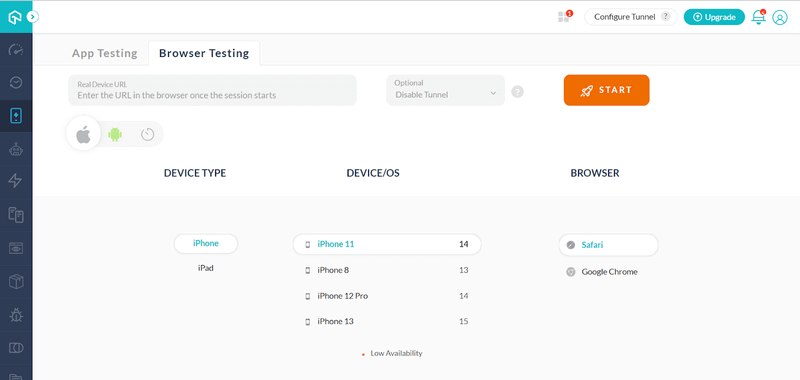
Step 6:Now, you can test the app once you type the website’s name for testing in the cloud-supported real device on the LambdaTest app.
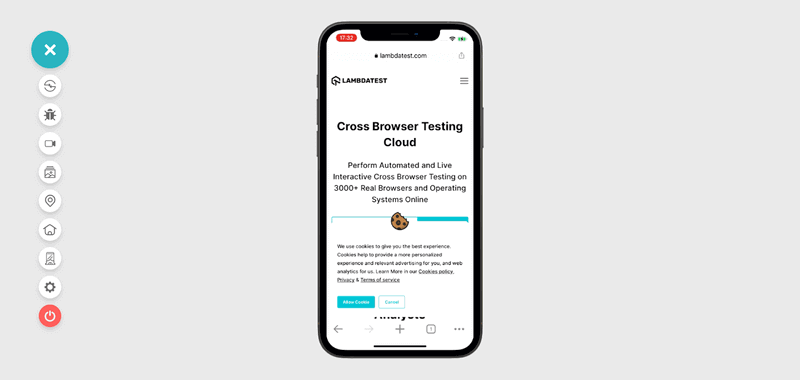
Challenges in User Acceptance Testing
Conducting user acceptance testing comes with its challenges. It could be a lack of resources or communication. You need to address these bottlenecks.
- Hand over UAT to functional testers if you lack resources
Owing to the lack of the right resources, many businesses assign user acceptance testing for their functional testing team. While many functional testers would check how the product would function, the business analysts can take over the end user needs and requirements for verifying the product. All in all, allocating user acceptance testing to a professional team is essential.
- Lack of communication
It’s a usual occurrence when team communication lags. Every software developer, business analyst, tester, and people involved should be able to discuss the issues within a specific time. Otherwise, a small error can lead to a lot of confusion. We need to use test integration tools for logging defects, fixing errors, and facilitating smoother communication.
- New stakeholder requirements
Nobody has the right to restrict your business from setting new needs and requirements when you test the product. Stakeholders can also take more time considering new business requirements in the next release. They might not always be time conscious. Ensure that the project management requirements are set as per business.
- Lack of proper plans for the process
User acceptance testing would occur once you complete the regression testing process. The team has one last chance to check if the product is apt as per the development requirements. When there is a delay, it’s going to bring down the user acceptance testing time. Usually, we perform user acceptance testing at the stage of requirements and risk analysis phase. We need to identify the real-time use cases to execute further. Then, you need to communicate them to your QA team.
- Providing personal opinions
Customers can point out mistakes just to show how superior they are. These comments might not make it more relevant to your team. You can avoid it if you build positive interpersonal relationships with them. It’s better to ask straight out for a reason and cross-question them a bit on what makes them think so.
Looking for a unique online identity? Use our random username generator for creative usernames!
Best Practices in User Acceptance Testing
Use acceptance testing can be done correctly when you involve the correct practices. You need to be clear on your objectives and get going. Here are the most used user acceptance testing practices.
- Identify and understand your target audience
Businesses should identify and try to know about them in detail. You wouldn’t be wasting your time when things don’t work as they should be. When you connect with your users, you must select your potential and actual users to conduct user acceptance testing. The development team should refrain from the user test. The feedback you receive from your user is quite useful.
- Develop the best test plan
You can use the test plan, be it a guide or instruction manual, to increase the testing effort. It would help you understand the testing objective, general practice, and detailed activities you intend to perform. Ensure that you prepare all you need to reduce any obstacles for the user. When your user faces any questions or problems, you need to lend your ears to listen to them.
- Come up with how you communicate about the bugs
You need to know what you need to do in case of an error. When users report a bug, you need to record the necessary information. You can use screencasts or screenshots to send the data about the bug to your team. This is why automated screenshot testing has been trending in recent times!
- Define your Acceptance Criteria correctly
After you develop the product, you should have clear and well-defined acceptance criteria since they would define if your product is worth approval or not. Your acceptance criteria should be pretty testable. It must be understandable for everyone with a simple language and user-oriented perspective.
- Observe how your customers react to visual aspects
Do they find the app more compelling visually? Do they find the colors attractive or too gaudy? Ask these open-ended questions to know what they think. UI testing is a must to determine these factors.
Do you want to know more about smart visual UI testing? Watch this video:
Subscribe to the LambdaTest YouTube channel to get the best updates on automation testing, mobile testing, responsiveness testing, and so on.
Conclusion
User Acceptance testing is essential when you want to hit your full branding and marketing potential. Using the right testing tool can help you perform user acceptance testing correctly. You should also rely on the right test strategy, planning, etc.
Happy testing!

